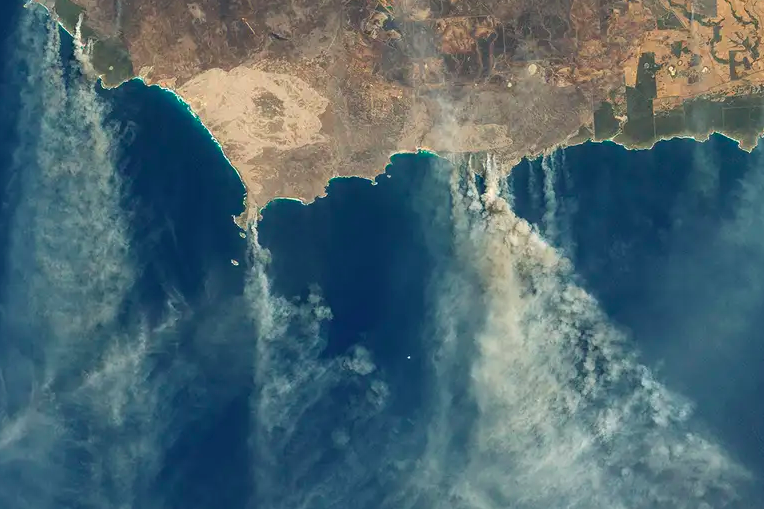
Burned land and thick smoke covering Australia’s Kangaroo Island NASA Earth Observatory/U.S. Geological Survey
The 2019–20 wildfires in Australia injected huge amounts of smoke into the stratosphere, which has led to record aerosol levels over the southern hemisphere.
Ilan Koren at the Weizmann Institute of Science in Israel and Eitan Hirsch at the Israel Institute for Biological Research analysed satellite data collected between 1981 and 2020 to look at what effect the devastating bushfire season in Australia had on aerosol concentrations in the stratosphere.
While aerosols in the lower atmosphere have a lifetime measured in minutes to weeks, those that reach the stratosphere can persist there for months or years.
The researchers looked at aerosol optical depth, which measures how much aerosols contribute to the amount of reflected light picked up by satellites.
The aerosol optical depth levels over the southern hemisphere in the early months of 2020 were at record levels: more than three standard deviations higher than the monthly averages prior to the wildfires, and comparable to those caused by a moderately large volcanic eruption.
Although all fires were extinguished by early May, the researchers noted that stratospheric smoke persisted across the southern hemisphere until at least July 2020, after which time it became more difficult to separate the smoke signal from other sources.
The overall effect of aerosols in the stratosphere is one of the largest uncertainties in climate science, says Koren.
In the case of the Australian wildfires, the smoke cooled Earth by blocking some solar radiation, leading to marked cooling over cloud-free ocean areas.
“But [aerosols] can also warm the stratosphere by absorbing part of the radiation [from the sun] and therefore affect processes there,” says Koren.
The intensity and location of the Australian fires were particularly suitable for injecting smoke into the stratosphere. For instance, the fires were far enough south to be located at a relatively high latitude, where the border between the lower atmosphere and the stratosphere is thinner – around 9 kilometres, compared with 18 kilometres over the tropics. “When it is shallow, the deeper clouds can penetrate it more easily and inject smoke to the stratosphere,” says Koren.
If climate change results in more fires at high latitudes in future, such as in southern Australia or the northern part of North America, we can expect these phenomena to become more common, says Koren.
Journal reference: Science, DOI: 10.1126/science.abe1415
